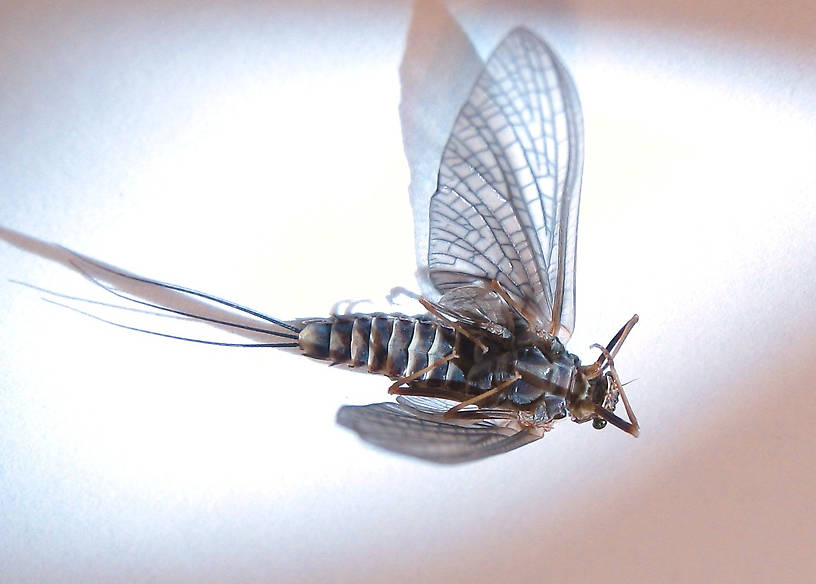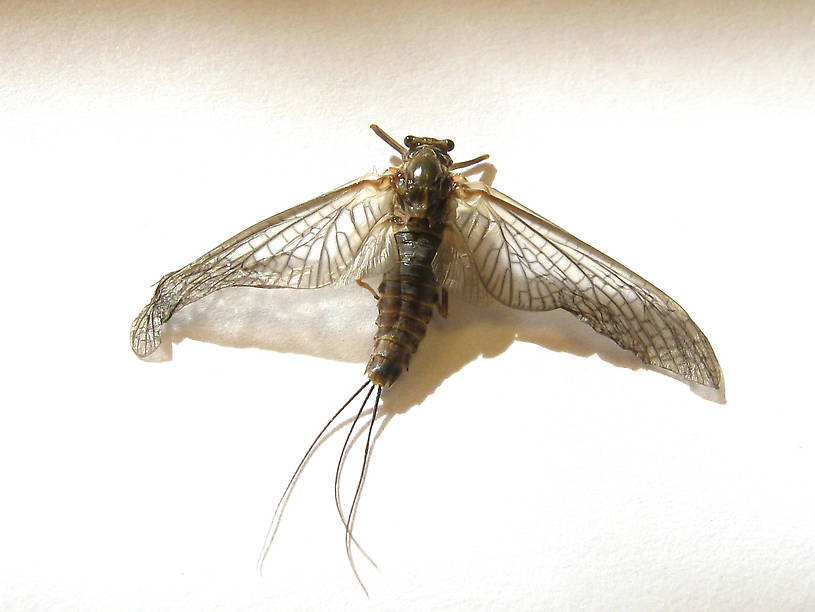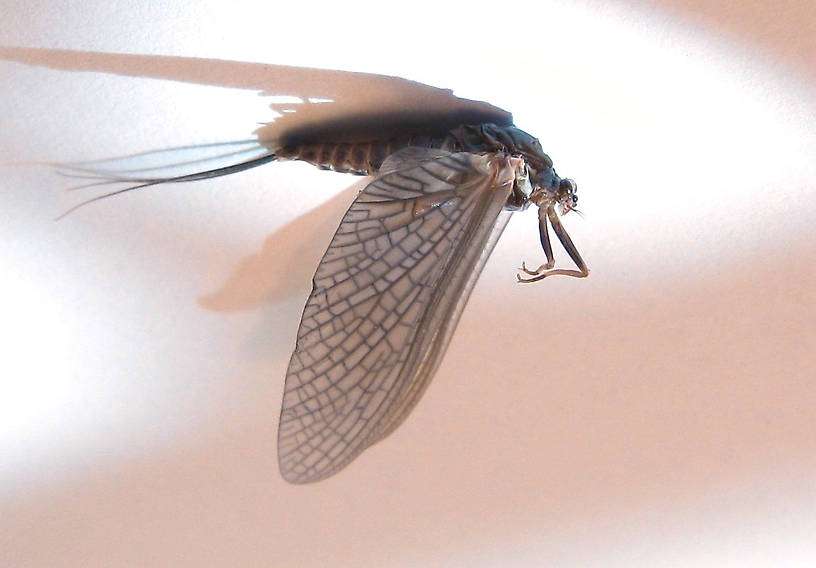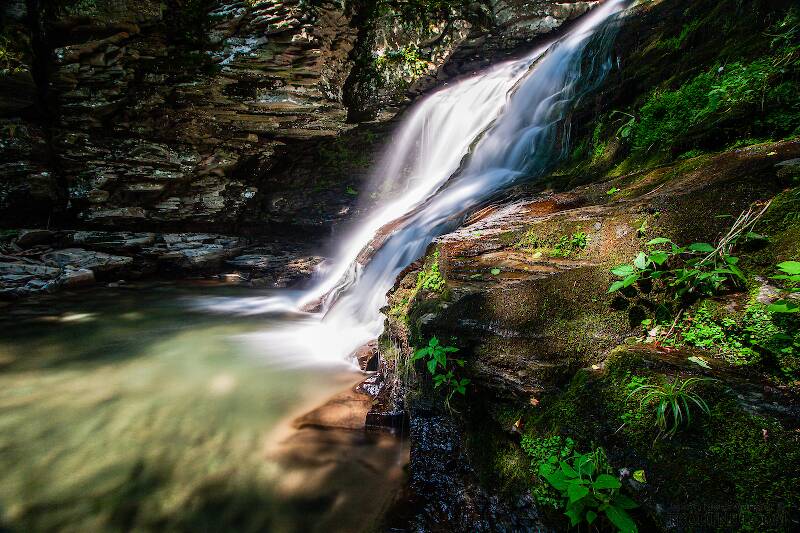
Salmonflies
Pteronarcys californica
The giant Salmonflies of the Western mountains are legendary for their proclivity to elicit consistent dry-fly action and ferocious strikes.
Featured on the forum

This is the first of it's family I've seen, collected from a tiny, fishless stream in the Cascades. The three species of this genus all live in the Northwest and are predators that primarily eat stonefly nymphs Merritt R.W., Cummins, K.W., and Berg, M.B. (2019).

Troutnut is a project started in 2003 by salmonid ecologist Jason "Troutnut" Neuswanger to help anglers and
fly tyers unabashedly embrace the entomological side of the sport. Learn more about Troutnut or
support the project for an enhanced experience here.
Female Timpanoga hecuba (Great Red Quill) Mayfly Dun Pictures
This specimen is 14 mm. Technically this is the subspecies T. h. hecuba. The Cascades, Sierras and further West is where the other subspecies, T. h. pacifica is found. The Great Basin seems to have formed a barrier preventing any overlap in their distribution.



This mayfly was collected from Mystery Creek #178 in Idaho on September 15th, 2013 and added to Troutnut.com by Entoman on September 23rd, 2013.
Discussions of this Dun
Great Red Quill
19 replies
Posted by Entoman on Sep 22, 2013
Last reply on Oct 2, 2013 by Jmd123
This critter provided some excellent fishing a little after lunch the day this specimen was collected. They seem to be very delicate in handling as it expired inverted in the fly box while setting up for the photos. On this particular day the duns were up and away with little if any time spent on the water. The fish were feeding on ascending nymphs well below the surface. The hatch was a perfect fishing density and the fish were glutted with these large guys. To the naked eye they appeared chocolate brown with tan rings. The wings were a med. dun. Notice how stout their tapered abdomens are... Real chunks of protein!
The duns did not darken as they aged and as the photos show, there is little (if any) difference in the appearance between the dorsal and ventral surfaces. Very unusual for an ephemerellid...
The duns did not darken as they aged and as the photos show, there is little (if any) difference in the appearance between the dorsal and ventral surfaces. Very unusual for an ephemerellid...
Start a Discussion of Dun
References
- Merritt R.W., Cummins, K.W., and Berg, M.B. 2019. An Introduction to the Aquatic Insects of North America (Fifth Edition). Kendall/Hunt Publishing Company.
Female Timpanoga hecuba (Great Red Quill) Mayfly Dun Pictures
Collection details
Location: Mystery Creek #178, Idaho
Date: September 15th, 2013
Added to site: September 23rd, 2013
Author: Entoman
Date: September 15th, 2013
Added to site: September 23rd, 2013
Author: Entoman

